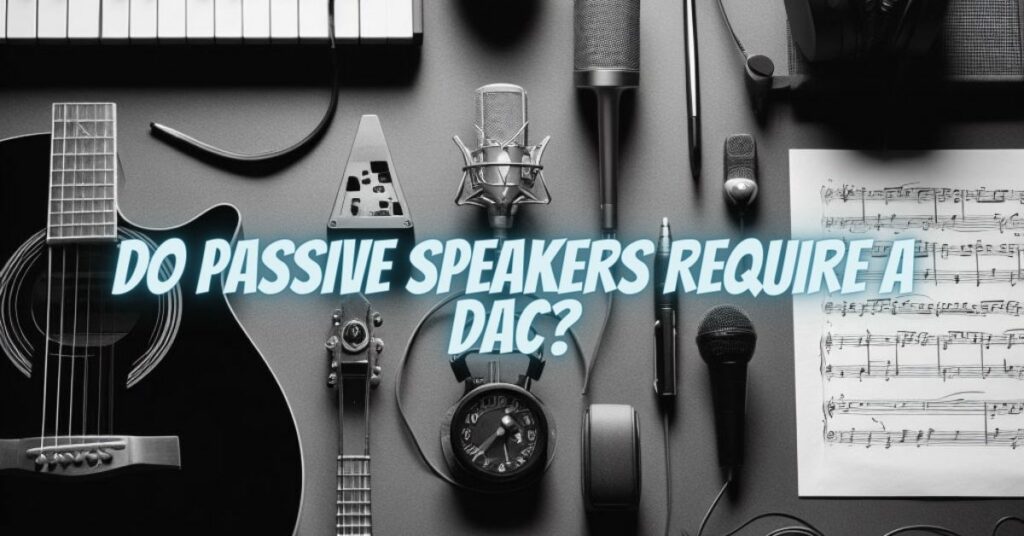When setting up an audio system with passive speakers, the question of whether you need a Digital-to-Analog Converter (DAC) often arises. Passive speakers, unlike powered or active speakers, require an external amplifier to function. In this article, we will explore the role of DACs in audio systems with passive speakers and help you understand whether or not you need one for your setup.
Understanding Passive Speakers
Passive speakers are speakers that lack built-in amplifiers and require an external amplifier to produce sound. They are widely used in home audio systems, studio monitors, and live sound setups. In a typical passive speaker setup, the amplifier receives an analog audio signal from the source, amplifies it, and sends it to the passive speakers to produce sound.
What Is a DAC?
A Digital-to-Analog Converter (DAC) is a device that converts digital audio signals into analog signals that can be played through speakers or headphones. DACs are commonly found in devices like smartphones, computers, CD players, and audio interfaces. They are responsible for transforming the 0s and 1s of digital audio files into analog signals that can be amplified and turned into sound.
The Role of DACs in Passive Speaker Systems
In a traditional audio system with passive speakers, the need for a standalone DAC depends on the audio source and the components you are using. Here are some scenarios to consider:
- Analog Audio Source: If your audio source, such as a turntable, is analog, you do not require a DAC. The analog signal goes directly to the amplifier, which then powers the passive speakers.
- Digital Audio Source: If your audio source is digital (e.g., a CD player, a computer, a streaming device), it may already have a built-in DAC. In this case, the digital signal is converted to analog within the source device, and the analog signal is then sent to the amplifier. You may not need an external DAC unless you want to improve the audio quality or have specific requirements.
- Higher-Quality Audio: If you have a digital audio source and are looking to enhance the quality of the digital-to-analog conversion, an external DAC can be a valuable addition to your system. A dedicated DAC can provide higher resolution and precision, potentially resulting in clearer and more detailed sound.
- USB DAC for Computer Audio: When using a computer as your audio source, you may choose to add a USB DAC between the computer and the amplifier to improve audio quality. USB DACs are designed to convert digital audio from USB connections into high-quality analog signals.
Whether you need a DAC for passive speakers depends on your audio source, your priorities, and the quality of your existing equipment. In many cases, passive speaker systems can function effectively without an external DAC, especially if your audio source already has a built-in DAC. However, if you are looking to enhance audio quality, particularly with digital audio sources, an external DAC can be a valuable addition. It’s essential to evaluate your specific setup, preferences, and audio quality requirements to determine whether a DAC is a necessary component for your passive speaker system.

